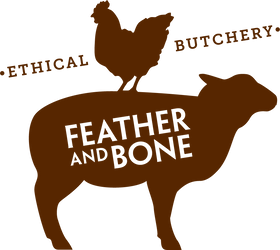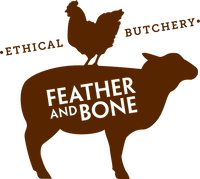Prime cuts and the Whole Animal Butcher conundrum
In the last few weeks you may have noticed a dearth of beef prime cuts on offer. In fact, as a customer pointed out yesterday, the only beef steaks available online are minute steaks which don't really cut it when you've got a vision of a plump, juicy sirloin driving you to distraction. In December and January in particular, Australians go crazy for prime bbq cuts - it's sirloin galore from Darwin to Devonport.
We get it, but we also need you to get this. These desirable prime cuts only constitute around 16% of the meat yield from an average beef carcass.
Variables include cattle breed, age and growing conditions but, as a rough rule of thumb, each beef carcass yields about 70% usable meat (depending on the body, about 30% is fat and bone which we do use but don't sell as meat cuts). 16-20% of the useable meat is the prime cuts - eye fillet, scotch, sirloin, rump, all the stuff everyone wants as steaks. We dry age these portions of the carcass to improve flavour and texture for up to six weeks which involves some reduction through moisture loss and trimming the outer layer of oxidised meat. The remaining 80% or so of the usable meat is all 'secondary cuts', many of which yield delicious, though less tender, steaks or require slow cooking to render their excellent flavour.
So, as the lunatic butchers who insist on buying whole bodies, we have to buy a lot of beef bodies to satisfy demand for the 16% of prime cuts. Which also means an awful lot of secondary beef to sell in the hottest summer on record when y'all ain't much interested in long, slow cooking and there's only so much mince and sausages you can make before the whole thing tips over. It's a tricky juggling act and it doesn't always work out perfectly.
This is the whole animal butcher's summer conundrum (word of the week) and hopefully it goes some way toward explaining why, for the last few weeks, there hasn't been much beef on the block.
Now, while this may sound like a tedious whinge, we promise it's not (really). Because, while committing to whole body butchery isn't exactly straightforward in a world which rewards scale, speed and volume, it's also a wonderfully rewarding, interesting, fulfilling and meaningful way to interact with the animal, the farmer, the butcher and the customer.
Only once in 12 years, under exceptional circumstances, have we received meat in a box and it was a very weird experience that we'll be happy not to repeat. Trust us, we love what we do!





When i purchase a sirloin or Rump steak or any other steak – of coarse it is weighed. Now that is what i pay for it. _by weight.
What i want to know what is the Australian standard of the min or max layer of fat on a steak.
I thought it is 6mm ? Why am i forced to pay for 10 or 12 mm of fat ?
Should this fat layer not be trimmed off to a standard layer of fat ?
If there no consumer protection or regulation concerning this?
I realize that this extra fat layer is of some loss to somebody along the line. But where is the regulation.? What is the standard ?
Leave a comment